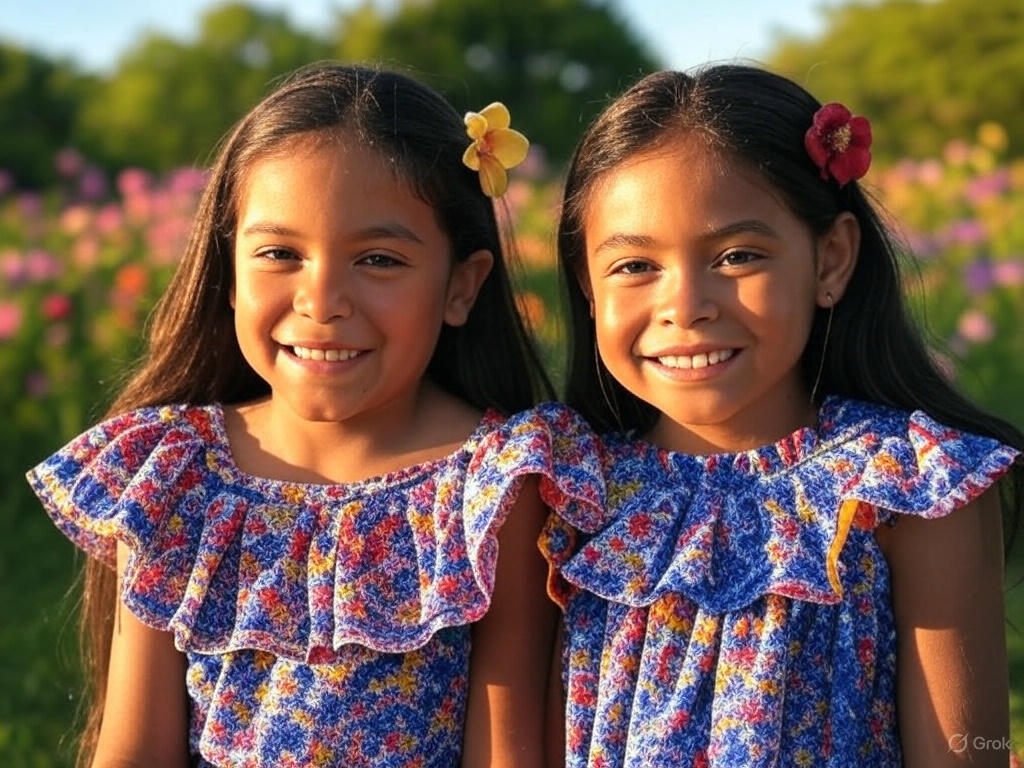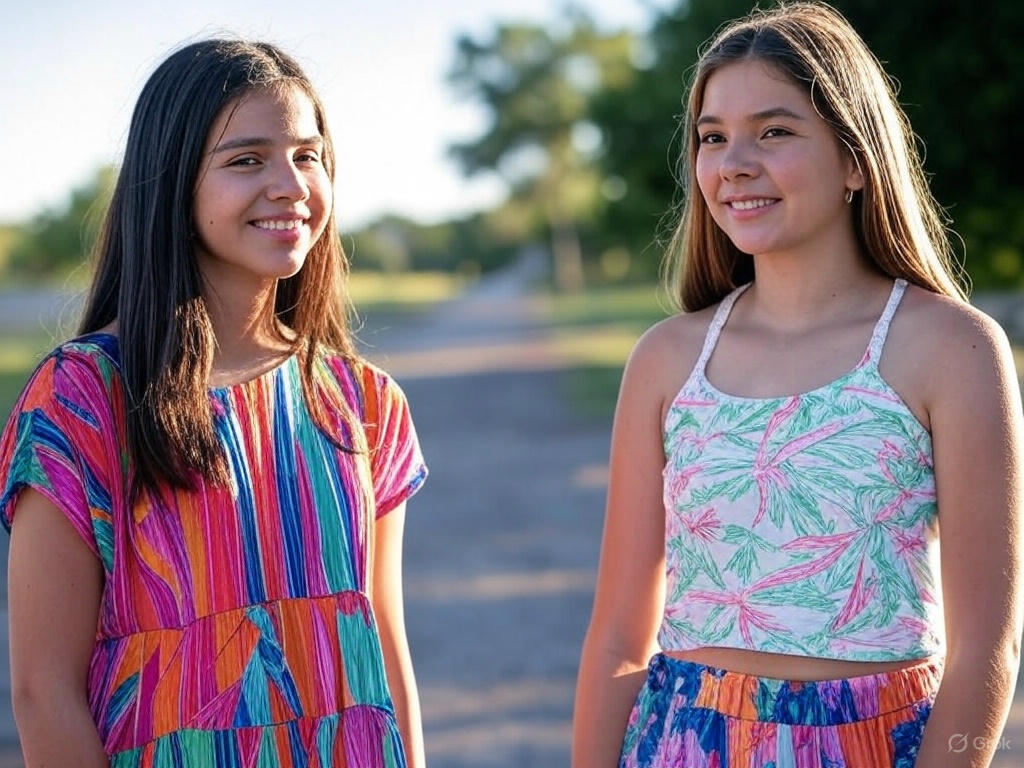Key Points
- Research suggests Venezuelan girls face significant challenges due to economic and political crises, impacting education and safety.
- It seems likely that beauty pageants are a cultural highlight, with recent winners like Ileana Márquez in 2023, but they also raise concerns about stereotypes.
- The evidence leans toward girls experiencing barriers like early pregnancies and machismo, affecting school attendance and future opportunities.
- There is controversy around gender-based violence, with reports of increased femicide and limited institutional support during crises.
Legal and Political Context
Venezuelan girls and women have legal protections under the constitution, which establishes gender equality and is a signatory to the UN’s CEDAW. Politically, women hold 32.1% of National Assembly seats as of 2023, showing progress but not parity, with historical milestones like universal suffrage in 1947.
Education and Opportunities
Girls in Venezuela have similar school enrollment rates to boys, but the crisis has led to 40% irregular attendance and 18% out of school, with machismo and early pregnancies posing additional barriers. Organizations like UNICEF and the Malala Fund are working to support education (Girls’ Education in Venezuela).
Cultural and Social Aspects
Beauty pageants, a source of national pride, have seen recent success with Ileana Márquez winning Miss Venezuela in 2023, but they also perpetuate hyper-sexualized stereotypes, impacting girls’ self-perception. The crisis has increased vulnerability to gender-based violence, with reports of rising femicide rates.
Survey Note: Comprehensive Analysis of Venezuelan Girls
Introduction
Venezuela, known for its rich cultural heritage and natural resources, presents a complex landscape for girls, marked by both achievements and significant challenges. This analysis explores the legal, educational, cultural, and social dimensions of Venezuelan girls’ lives, drawing on recent data and reports to provide a detailed overview. The ongoing economic and political crises have disproportionately affected girls, impacting their education, safety, and opportunities, while cultural phenomena like beauty pageants highlight both pride and controversy.
Legal and Political Landscape
Venezuela’s legal framework establishes gender equality in its constitution, and the country is a signatory to the United Nations’ Convention on the Elimination of All Forms of Discrimination Against Women (CEDAW) (Women in Venezuela). This commitment aims to protect girls and women, but implementation faces hurdles. Politically, women have made strides, with universal suffrage granted in 1947, a historic milestone. As of 2023, women hold 32.1% of the seats in the National Assembly, with 89 female deputies out of 277 members, according to the Inter-Parliamentary Union (Venezuela | National Assembly | Data on women). This figure reflects progress from earlier years, such as 33% in 2015, but falls short of gender parity. Historical efforts, like a 30% quota for parliamentary candidates in 1997 (suspended in 2000 as unconstitutional), highlight the ongoing struggle for political representation. Notable figures, such as Adina Bastidas, the first female vice-president in 2000, and gender parity in the Supreme Tribunal (16 women, 16 men), underscore achievements, yet community-level female leaders report exclusion from higher political opportunities.
| Year | Number of Women Elected | Percentage of Parliamentary Seats | Notes |
|---|---|---|---|
| 2010-2015 | 22 | N/A | Previous period representation. |
| 2015 | 50 | 33% | From the 2015 legislative elections; however, 9 of 56 representatives forced into exile. |
| 2023 | 89 | 32.1% | Current representation, showing slight decline but still significant. |
Education and Workforce Participation
Education is a critical area for Venezuelan girls, with historical data showing similar enrollment rates to boys, as education is free and compulsory. In 2017, 71.7% of women over 25 had completed secondary education, indicating strong access (Women in Venezuela). However, the economic crisis has severely disrupted this, with reports indicating up to 40% of school-aged children not attending regularly and 18% out of the system entirely (Venezuela | Education Cannot Wait). For girls, additional barriers include machismo and lack of sex education, leading to early pregnancies that force many to drop out, as highlighted in a 2020 Malala Fund report (How the crisis in Venezuela is affecting girls’ education). The Gender Gap Index score of 0.71 in 2017, showing women 29% less likely than men to have equal opportunities, has likely worsened, with the crisis exacerbating disparities (Girls’ Education in Venezuela Suffers Amid Political Crisis). Organizations like UNICEF and the Malala Fund are implementing programs, such as the SIGUEME system for quality management and digital education strategies, to support vulnerable girls, especially in rural and indigenous sectors (All children have access to education and learn in the Bolivarian Republic of Venezuela).
In the workforce, women make up 52% of the labor force in 2018, but the crisis has limited opportunities, with many girls forced to work instead of study, impacting long-term prospects. The lack of girl-only schools, as noted in reports, further complicates access, with safety concerns like gang violence adding to the challenges.
Health and Maternal Care
The healthcare system in Venezuela is in crisis, significantly affecting girls and women. Maternal mortality rates were 95 per 100,000 in 2015, with shortages of antibiotics, antiseptics, and prenatal care contributing to high infant and maternal mortality, particularly linked to lack of iron supplements and folic acid (Women in Venezuela). The restrictive abortion laws, allowing termination only to save the woman’s life, force many into illegal procedures, often in precarious conditions, with no official statistics available. For girls, the lack of access to healthcare exacerbates risks, especially during adolescence, with reports of high HIV transmission from mother to child due to inadequate antiretroviral protocols.
Violence Against Women and Girls
Gender-based violence is a pressing issue, with 2,795 women murdered based on gender in 2017, and femicide rates increasing by 50% during the crisis, though reporting has decreased due to distrust in institutions (Women in Venezuela). The Ley Organica Sobre el Derecho de las Mujeres a una Vida Libre de Violencia, enacted in 2007, aims to protect, but enforcement is weak, with only five shelters for victims and limited gender-sensitive investigation protocols, as noted by the CEDAW Committee (Human rights in Venezuela Amnesty International). For girls, the crisis has increased vulnerability to sexual violence, sex trafficking, and prostitution, with reports from the International Rescue Committee highlighting psychological violence as the most common type, accounting for 65% of cases in Venezuela between 2022 and 2023 (Venezuelan women at high risk of experiencing psychological and physical violence at home and abroad, warns IRC).
Impact of the Economic Crisis

The economic crisis, marked by hyperinflation and extreme food insecurity, has disproportionately affected girls and women. Amnesty International warns that women and girls fleeing Venezuela face heightened risks of gender-based violence and discrimination, with the crisis exacerbating vulnerabilities (Americas: Women and girls who flee Venezuela are unprotected against gender-based violence and discrimination). Inside the country, the lack of access to basic services, including healthcare and education, has led to increased school dropouts, with many girls unable to continue due to economic pressures. The Women’s Peace and Humanitarian Fund reports that 56% of the 7 million people needing humanitarian support are women and girls, disproportionately impacted by COVID-19 and sanctions, with restricted abilities to absorb economic shocks (Venezuela – Women’s Peace and Humanitarian Fund).
Cultural Perceptions and Beauty Standards
Beauty pageants are a cultural cornerstone, with Venezuela holding six Miss World and seven Miss Universe titles, the most recent being Ileana Márquez, crowned Miss Venezuela in 2023 (Full List Of Miss Venezuela Titleholders). This success is a source of national pride, but it also reflects hyper-sexualized stereotypes, with high rates of cosmetic procedures per capita linked to oil wealth culture. Critics, including feminists, argue that pageants perpetuate traditional gender roles, with allegations of contestants being arranged as escorts, raising ethical concerns (Women in Venezuela). For girls, these standards can impact self-perception, with a video highlighting the strict beauty standards leading to insecurity and surgeries (The strict beauty standards Venezuelan women experience, resulting in insecurity and surgeries).
Notable Venezuelan Women and Girls
Throughout history, Venezuelan women have excelled in various fields, inspiring girls. Heroines like Manuela Sáenz and Luisa Cáceres de Arismendi led during independence, while modern icons include Yulimar Rojas, who set a world record in women’s triple jump at 15.67m in 2021, and fashion designer Carolina Herrera, with global sales in billions (Women in Venezuela). In arts, Marisol Escobar and Teresa Carreño gained international acclaim, and in literature, Teresa de la Parra and Ana Teresa Torres enriched the cultural landscape. These figures serve as role models, though access to such opportunities for girls is limited by the crisis.
Intersectionality and Afro-Venezuelan Girls
Afro-Venezuelan girls face double discrimination based on gender and race, often experiencing racial profiling and poverty. Beauty pageants, while celebrated, perpetuate white-centric standards, marginalizing Afro-Venezuelan girls, with reports noting their exclusion from mainstream representations (Women in Venezuela). Addressing these issues is crucial for inclusivity, with efforts needed to ensure equal opportunities.
Conclusion
The lives of Venezuelan girls and women are marked by resilience amidst adversity, with significant achievements in education, politics, and culture, yet challenged by the economic crisis, gender-based violence, and limited opportunities. Girls face particular barriers in education, with machismo and early pregnancies impacting attendance, while beauty standards and crisis-related vulnerabilities add complexity. Recognizing both triumphs and struggles, as highlighted by organizations like UNICEF and the Malala Fund, is essential for shaping a more equitable future for Venezuelan girls.


